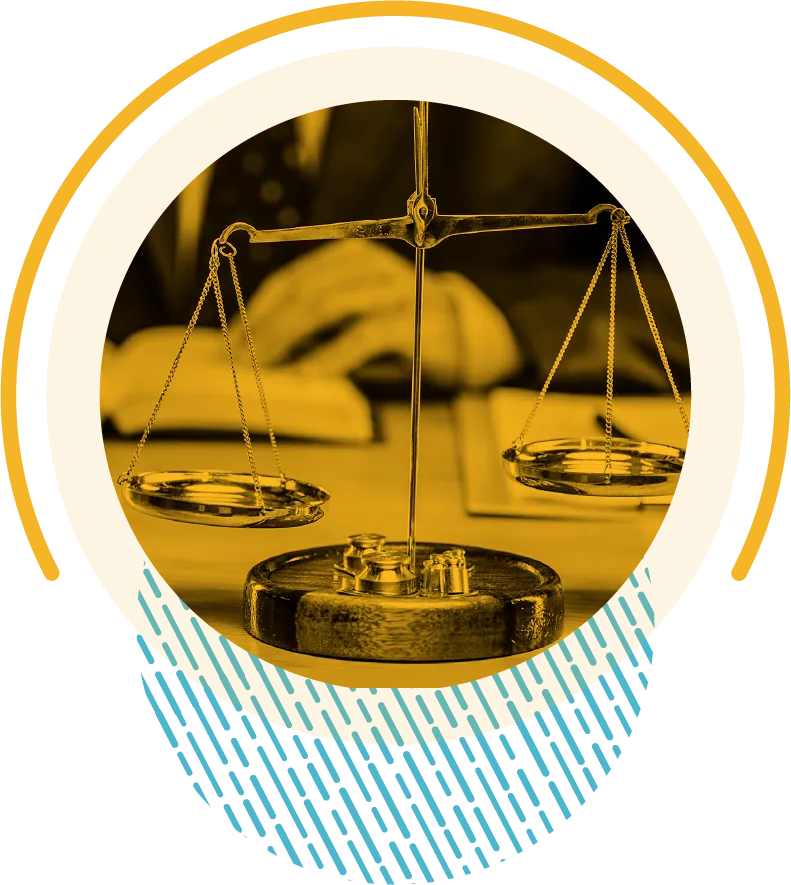Moving from
reflection
to action
Guide on transparency and accountability for philanthropic organizations Download the guide
The guide
Transparency and accountability are important for building trust and support in philanthropic organisations. It is considered a part of good governance. There is a growing demand for guidance on how to increase transparency and accountability in the philanthropic sector. The new guide, "Guide on Transparency and Accountability for Philanthropic Organisations: Moving from Reflection to Action," provides step-by-step guidance on how to create and implement plans for transparency and accountability.
The Guide has been specifically designed for use by a wide range of organisations, from smaller entities to large, global operations. The core principles are the same:

The state that results from making information available from inside an organisation to a wider public, either through proactive publication or by responding to requests for information.

A readiness to take responsibility for actions, achieved by being transparent about those actions against a pre-defined framework of values and indicators, and responding to the findings of any evaluation and/or the feedback received from stakeholders.
The Guide has three sections on Transparency, Accountability, and Monitoring, Learning, and
Evaluation. It provides ten steps for organisations of all sizes to set up and improve their
internal systems for transparency and accountability. The Guide is flexible and can be
adapted to organisations' specific needs. WINGS hopes the Guide will contribute to building
trust and legitimacy in the philanthropic sector.
We would be delighted to know how you have implemented the Guide. Feel free to write to us with
your feedback at [email protected].
Transparency
follow the steps
The first step in publishing information is to identify the types of documents you have, especially those that may be subject to transparency rules. This process involves key staff members such as the CEO, HR Director, and department heads, based on the organisation's size.
 An initial list that you can use as a checklist: Sample List
An initial list that you can use as a checklist: Sample List - Mission and mandate
- Values you stand for and values you look for when making funding decisions.
- Theory of change
- Governance structures, rules and meeting information
- Overview of decision-making processes
- General events and meeting information
- Strategy with objectives and indicators for evaluation
- Internal regulations or policies, such as:
- Code of ethics or code of conduct
- Non-discrimination and inclusion policy (covering gender, disability, race, age, religion, and other aspects of identity)
- Salaries policy, including ranges and policy on gender pay equality
- Assets declarations of senior officers
- Conflicts of interest policy & declarations by senior officers
- Investments policy
- Environmental impacts policy
- Whistleblower policy – internal and external complaints
- Transparency policy with information on how to make requests
- Privacy and data protection policy
- Key personnel, with biographies and contact information, including:
- Board members
- Director and senior executive staff
- Programme directors / team leaders
- Press & communications officers
- Annual activity reports
- Annual or quarterly financial reports
- Other relevant financial information such as donor information
- Audit report on annual financial statement
- Details of grants by programme and/or grantee
- Accountability: monitoring and evaluation reports on impact achieved
Most modern access to information laws define the documents held by government bodies
as all information stored in any format. For private entities, however, you have a
margin to define which documents are, in principle, public, and which you can consider
“internal” and will not be for publication.
For instance, your employees' human resources files and pay slips are information you
will likely agree to not make public.
It is not always a clear-cut yes or no, public or not, decision. Taking another example,
if you ask your staff to complete some kind of “conflicts of interest” declaration, you
might decide not to make this public. However, you might decide that for the senior staff,
it would be good practice to publish these declarations and update them regularly.
Similarly, you might be ready to be transparent about all larger donations you receive
but decide on a cut-off point for donations below which you will not publish the names
of smaller donors.
Despite these considerations, if your transparency policy includes giving members of the
public the right to request documents, it is important to recognise that considerable amounts
of information might fall within the scope of a request and, even if it is not on your
website, you will have to examine these documents on a case-by-case basis. See step 5 below
for more on the request process.
It's important to consult with stakeholders when deciding which documents to make public, as private organisations have different transparency requirements compared to government bodies. The goal is to be transparent in a way that is sustainable and manageable for the organisation. To do this, it's helpful to identify the important internal and external stakeholders.
 Internal stakeholders
Internal stakeholders - The organisation’s founder(s), be they private individuals, public bodies or companies
- For private foundations, such as family foundations, the organisation’s donor(s)
- Board of Directors
- Staff Interns
- Volunteers
- For publicly supported foundations, such as community foundations, the organisation’s donors
- Grantees and other direct recipients of funding support
- Beneficiary communities
- Other organisations working within the same arena, including partner organisations
- Journalists, including local media outlets and relevant specialist media
- Academia, specifically those working in relevant fields
- The public at large
- Government (national, regional, local)
- Talk to stakeholders to learn about their information needs. This can affect how you organise your website, newsletter, and social media. Instead of organising information based on internal structures, consider organising it based on how the community sees you or life events. The community's recommendations may not decide what you publish, but it's important to understand what they want.



- Map the legal obligations for making information public
- Review the laws in your country regarding information disclosure
- Determine which information is required to be submitted to a central register and made available to the public
- Consider publishing required information on your website for easy access
- Ensure timely delivery of required information to the public authorities
- Check if your website needs to have the name, address, and contact information of the organisation
- Consider the obligation to reveal sources of foreign funding
- Develop a clear policy for compliance, regardless of personal agreement with the law.
For proactive publication, the following principles can guide information preparation and organisation:
 Available
Available Make information easily accessible: Share information through multiple channels, not just on your website, to reach a wider audience. Use mailing lists, social media, videos, graphics, printed materials, etc.


 Findable
Findable Organise information for easy findability: Consider user needs when deciding where and how to publish information. Get feedback from stakeholders to ensure information is in a format that makes sense to them.
 Relevant
Relevant Disseminate information that is useful and interesting to your audience. Consult with stakeholders to determine what information is most relevant to them.


 Comprehensible
Comprehensible Write information in a way that is easily understood by your audience. Use clear language and consider rephrasing documents for simplicity. Utilise graphics to help clarify information. Provide information in the major languages of your stakeholders and in formats accessible to all, including Braille and language for those with developmental disabilities.
 Up to date
Up to date Regularly update information to keep it accurate and relevant. Clearly indicate when information was last updated. Store information in a way that makes it easy to quickly share while also removing any sensitive data.

Just as with national access to information or freedom of information laws, your transparency policy should give members of the public the right to request information.
 The key elements of the right to request are:
The key elements of the right to request are: Your website should include guidance on how to request information.
Contact info:Provide name, email, phone number for clarification
Requests by any form:Allow requests to be made via email, post, online form, phone call, or messaging services
Simple requirements:Requests should be simple, requiring only a name, email/address, and brief description of the information
Acknowledge requests immediately:Acknowledge requests promptly (within 24 hours), and provide reference information for follow-up questions
Clear timeframes for responses:Establish clear timeframes for responses (within 10 working days, with a possible extension of another 10 days for complex requests)
Any format:Allow requests to be made in any format, including digital formats that are machine-readable
Don’t limit freedom of expression and reuse of information:Ensure information provided is open and can be shared/reused without limitations
Clarifications and Explanations:Be open to clarifications and follow-up questions, and provide clarifications and explanations if needed.


Before making information about your philanthropic work public, you need to weigh the potential harm against the benefits of being transparent and accountable to the public. This is known as the "harm and public interest test." For example, if your work is in a hostile environment towards LGBTQI+ rights, you may evaluate each grant to see if making it public could harm recipients and those they work with. Similarly, when publishing meeting minutes, you may need to consider if the potential harm of making it public outweighs the benefits of transparency. If full details cannot be made public, consider publishing summary information without causing harm.

Everyone’s right to protect their private life is important. That said, there tends, these days, to be a huge amount of caution around protection of personal data and a certain fear of breaking national law or of being seen to be reckless with personal data. It is therefore really important to be clear about your internal personal data protection policy.


When you are refusing documents in their entirety, you simply do not make them public and let any requesters know about this and about the reasons why.
- When making only part of a document public, clarify the practice for deleting information (redacting)
- There are many standards for redacting information in documents with over 135 access to information laws worldwide
- Redaction methods include replacing text with XXXXXXX or a statement on why information was removed, blacking out text using a secure system such as Adobe Acrobat Pro, or using a black highlight xxxx.. Highlighting text in black is not a secure way to redact information as it can be easily recovered by undoing the black highlight or by copying and pasting the text into another document.
- Printing, hand-redacting, and scanning a document is not recommended as it risks the document becoming unreadable and less useful for anyone wanting to review it.

It is crucial to determine who in the organisation will be responsible for ensuring compliance with the transparency policy and who will make decisions on releasing information. This can be a single person, a Transparency Officer, or a group of people in a Transparency Committee with specific roles.


If there is a single Transparency Officer, they should either have decision-making power or have a clear understanding of who has the authority to make disclosure decisions.

If multiple people are involved in the decision-making process, there should be established procedures and timelines to avoid delays.


The Transparency Officer or Committee should be introduced to all staff members, with their roles and responsibilities clearly defined during training. Staff members should prioritise responding to the Transparency Officer or Committee when requested.

It is not recommended to assign the role of Transparency Officer or Committee to the press or communications officer or the web technician, as transparency requires a distinct strategy and understanding of the organisation, and should be a senior role linked to reporting accountability indicators.


A well-designed transparency policy can be hindered if the responsibility for compliance and decision-making is not clearly defined and communicated to all staff members.

When a person searches for information on the website but doesn't find it, or when a request for information is denied, there should be a process for appealing the decision. The person handling the appeal should not be the same person who made the initial decision. For smaller organisations, this may seem like a challenge, but it can be addressed by enlisting the help of an external expert. This expert could be from a transparency-focused civil society organisation, someone who has worked in the office of an independent oversight body, or a law professor knowledgeable in your country's access to information law.

Clear information on your website about how to appeal, who to write to, and the timeframe for doing so
Responses refer to appeals procedure with information on how to complain if the answer to the request is not satisfactory, and to whom to write
Timeframes for both making the complaint and within which the definitive answer will be received. It is recommended that members of the public have at least 20 working days (one month) in which to complain and that the complaint is answered within 20 working days from receipt.
 Essential Training for all Staff: It's crucial to train all staff on the defined Transparency Policy. Prioritising Key Staff: Prioritise training for website managers, database managers, and senior decision
makers who are most impacted by the policy. Knowledge of Information Management: All staff must be trained and understand how to properly record and make information
public. Top Level Support: Directors can show the importance of transparency by mentioning the policy positively
in meetings. Cultivating a Culture of Transparency: Regular reminders and refresher training can help create an organisational culture of
openness.
Essential Training for all Staff: It's crucial to train all staff on the defined Transparency Policy. Prioritising Key Staff: Prioritise training for website managers, database managers, and senior decision
makers who are most impacted by the policy. Knowledge of Information Management: All staff must be trained and understand how to properly record and make information
public. Top Level Support: Directors can show the importance of transparency by mentioning the policy positively
in meetings. Cultivating a Culture of Transparency: Regular reminders and refresher training can help create an organisational culture of
openness.

It is recommended to regularly report and evaluate the Transparency Policy. Report at least once a year and track document downloads and requests more frequently.
 Core elements of the reporting should include:
Core elements of the reporting should include: - Percentage of documents listed for proactive publication which are online
- Number of times each document has been downloaded Number of requests received
- Outcomes of the requests along with the times taken to respond Number of appeals and their outcomes
- List of information requested or at least most-requested information

- The evaluation should be done regularly, with options to be yearly or more frequently, depending on the organisation's size and resources.
- The evaluation can include tracking progress against set indicators, such as increase in document downloads or request numbers.
- Qualitative evaluation can be done through feedback from people who received information, asking if it was useful and how it impacted their understanding of the organisation.
- The purpose of the evaluation is to determine the effectiveness of the policy and determine if any adjustments are needed.


- The evaluation should not be limited to evaluating itself, but should be used to improve the policy.
- If a document is frequently requested but not available on the website, consider adding it to the website.
- If materials on the website are not frequently downloaded, examine factors such as accessibility and readability.
- The result of analysing and improving the policy after evaluation will lead to a more effective Transparency Policy over time.
Accountability
follow the stepsFor an organisation to be accountable, it must establish ways to report to stakeholders about its actions ideally compared to pre-set objectives, and should willingly accept feedback and respond to the reactions of stakeholders and/or the public. Accountability differs from transparency, which is just a one-way flow of information from the organisation to the public, and it also differs from participation, which means giving stakeholders a role in decision-making. An Accountability Plan should be a formal document created by an organisation, outlining how it plans to be accountable, and it should be officially adopted by the organisation's board to provide support and establish its importance within the organisation.


- Define what issues, policies, and outcomes your organisation is ready to be held accountable for by your stakeholders.
- Meet legal reporting obligations as required by the jurisdiction in which your organisation is registered.
- Meet internal reporting obligations defined by organisational structure and governance rules.
- Integrate internal reporting into your Accountability Plan for wider public reporting.
- Use transparency to share information with stakeholders and the wider public, including compliance with legal and internal reporting obligations.
- Define criteria for accountability to stakeholders and the public.
- Identify key stakeholders and define their perspectives and needs to determine appropriate information, indicators, and formats for publication.
- The organisation’s founder(s), be they private individuals, public bodies or companies
- For private foundations, such as family foundations, the organisation’s donor(s)
- Board of Directors
- Staff
- Interns and volunteers
- For publicly supported foundations, such as community foundations, the organisation’s donors
- Grantees and other direct recipients of funding support
- Beneficiary communities
- Other organisations working within the same arena, including partner organisations
- Journalists, including local media outlets and relevant specialist media
- Academia, specifically those working in relevant fields
- The public at large
- Government (national, regional, local)
When developing an Accountability Plan, there are several options for accountability reporting, including:
 Setting up an Accountability Panel
Setting up an Accountability Panel - An independent advisory board focused on accountability
- Includes people with expertise in accountability and evaluation
- Can have a strong degree of independence from day-to-day activities
- Can include people who volunteer their time to assist with accountability, especially helpful for smaller organisations
- Requires support and coordination from the organisation's team, but less so than having senior management handle all accountability work
- A traditional governance mechanism
- A Monitoring and Evaluation officer, who normally reports to the CEO or Executive Director, but makes a yearly report to the Board or sub-committee
- Contracting an external peer review


Note: The remainder of this Guide is structured so that it can be implemented whether or not you have an Accountability Panel in place, something which is not essential even though it is recommended given the multiple benefits it can bring.


The next step is to create a plan for measuring accountability using documents such as strategic plans and policies. These documents will outline your strategic objectives, how to achieve them, and the values and internal procedures your organisation follows. All these documents will be referred to as the "accountability instruments" or "accountability framework," and will be used as a basis for measuring and evaluating your progress.
- Mission and mandate, including values and theory of change
- Governance structures
- Governance meeting information
- Overview of decision-making processes
- General events and meeting information
- Strategy with objectives and indicators for evaluation
- For publicly supported foundations, such as community foundations, the organisation’s donors
- Code of ethics or code of conduct
- Non-discrimination and inclusion policy (gender, disability, race, age, religion and other aspects of identity)
- Salaries policy, including ranges and policy on gender pay equality
- Assets declarations of senior officers
- Conflicts of interest policy & declaration by senior officers
- Investments policy
- Environmental impacts policy
- Whistleblower policy – internal and external complaints
- Transparency policy with information on how to make requests
- Privacy and data protection policy

An advantage of mapping important plans and policies is that it can lead to an
improvement of existing documents that outline your organisational values, policies,
rules, and standards. Many organisations accumulate policies as they grow but don't
often take a step back to review them objectively.
However, revising all of these documents can be time-consuming and delay the development
of your Accountability Plan. It is suggested that, even if revisions or new policies are
necessary, you should still move forward with your Accountability Plan using the available
material.


- Identify specific indicators to evaluate compliance and reporting for each selected accountability instrument.
- Indicators can be both qualitative and quantitative.
- In the first years of a new Accountability Plan, keep the indicators simple and well-defined to ensure data gathering is realistic.
- An Accountability Plan can help clarify and improve internal monitoring and evaluation systems.
- Indicators can include a combination of quantitative data (e.g. number of funded projects, people receiving grants) and qualitative data (e.g. impact on people and community, feedback from employees).
- For internal policies, you can show data on closing the gender pay gap and the impact it has on employees using feedback from internal surveys.
- Include negative feedback, both internal and external, along with data on how problems were handled and complaints were dealt with.
- The indicators should also measure actions taken in response to positive and negative findings. Collecting qualitative and quantitative data will provide a better understanding of the impact of the organisation's actions.
- Year-on-year data and analyses will help with strategy development and improve communication with stakeholders.



Once an initial structure for the Accountability Plan has been developed, it's recommended to involve relevant stakeholders in the Accountability Plan by consulting them on the framework, metrics, and reporting timetable. This can be done through a survey, focus groups, or individual interviews. This step is important because it can provide valuable insights and ensures that stakeholders are aware and involved in the accountability exercise. Feedback from this participation should be considered in the finalisation of the Plan, and the results of the consultation should be made public.
Once the Accountability Plan is ready, it should be shared with staff and stakeholders and also be made available to the public on the organisation's website. To raise awareness, the plan can be shared through a newsletter, press release, or social media, and an informational video or FAQ could also be created.

An Accountability Plan should include a mechanism by which issues can be raised in an anonymous way to those removed from the decision making in a particular organisation, and with guarantees both of the protection of the identity of the whistleblower and of an independent investigation.
Recommended key elements of an organisational Whistleblower Policy:
- An independent individual or group should be appointed to handle any issues reported. They should have the power to interview relevant parties and access necessary documents. It is recommended to include language in contracts with staff, contractors, and grantees, to agree to this in advance.
- Secure and anonymous channels for reporting should be established, such as a secure email or a secure encrypted box, which can be obtained from various civil society organisations for free.
- Clear procedures for action when complaint are received including:
- Timeframes for each step of the investigation
- Guarantees for protection of the identity of the original whistleblower(s) and others who come forward to give evidence in support of the complaint
- A commitment to publish the findings of any investigation and to report about how it was acted upon
- A commitment to take necessary actions to solve specific problems (such as sanctions or dismissals) and also to create solutions to stop widespread problems (like discrimination or sexual harassment) from happening again.
- A pledge to let relevant law enforcement authorities know if it transpires that criminal offences have occurred.


It's important to have a plan in place for how to handle complaints and
whistleblower reports. The plan should specify who will be notified based on the
seriousness of the issue and what procedures will be followed, such as holding
emergency meetings or involving an Accountability Panel.
Having clear procedures in place can prevent stress on staff and lead to quicker resolution
of problems. Taking an open and constructive approach to addressing problems is better
for the organisation in the long term and can improve relationships with stakeholders.


- Once your Accountability Plan has been developed and adopted it is essential to provide relevant information and training to all staff members. This helps in shaping the organisational culture that is accountable.
- The training process is an opportunity to ensure that everyone involved in the organisation is fully briefed on the mission, vision, strategies, and values.
- The training process also involves all members of the team in the accountability process, preparing them to contribute to the evaluation and data gathering process.
- The staff briefings and training help inculcate a culture in which all relevant actors are willing to examine critically and constructively what works and what does not, and willing to accept advice or criticism, and modify practices accordingly.
- In addition to the specific trainings, it is important for those responsible for accountability to provide ongoing guidance and support across the organisation as needed.

- Reporting on the Accountability Plan is recommended to be done annually, but for larger organisations or selected indicators, it can be done more frequently (e.g. six-monthly or quarterly)
- Planning, data collection, revision, analysis, and drafting of the report must be scheduled with sufficient time allocated for each step
- Time must be allocated for design (printed or online versions) and website development (for interactive data or graphic presentations)
- A communication strategy must be developed to reach all relevant stakeholders
- The evaluation of the Accountability Plan must be conducted in an independent and objective manner
- Appoint an Accountability Panel of independent persons to oversee the exercise or contract an external consultant/consultancy company to carry out the evaluation process
- Clarity must be provided on access to documents, whom to talk to, and how the investigation will be supported and not obstructed
- The benefit of both the independent Accountability Panel and external evaluator is that staff and stakeholders find it easier to talk frankly to a third person



- Holding follow-up participation or consultation exercises, to the extent that resources allow, is recommended.
- These exercises could include conducting a survey, presenting the main findings of the accountability report in a meeting or focus groups, or asking for feedback via the website.
- Demonstrating openness to feedback on the accountability report is important in showing that the organisation is willing to be held accountable.
- Acting on and publicising feedback received is a part of the accountability process, including providing clear feedback to stakeholders on how their concerns have been addressed.
- Post-reporting consultations should not be just formality, but should be conducted in a genuine effort to understand stakeholders better and make the work of the organisation more effective.
Oversight
Evaluation
& Learning


- Establishing transparency and accountability systems creates the infrastructure for monitoring, evaluation, and learning (MEL).
- Integrating pre-existing MEL frameworks into the public-facing Accountability Plan can be done to the extent possible.
- An internal MEL Plan is necessary for comprehensive evaluation of all the work being done and to address internal issues such as staff performance and progress reviews.
- Departments such as human resources and financial management should be involved in the internal MEL process.
- External experts/evaluators or members of the Board can assist with the internal MEL process. Clarity is needed on who will do the overall evaluation.
- It is important to have clarity in internal policies about which subset of materials cannot be made public for reasons such as personal data protection. The remainder of the documents and evaluations should be open to a wider audience. See also the Transparency Guide Section 1 for more on this.
- The Accountability Guide in Section 2 can be used for structuring the internal MEL work with the aim of achieving higher levels of constructive criticism and self-evaluation.
- It’s highly important to identify the necessary resources at the very beginning of the Transparency and Accountability activities.
- Adequate human, technical, and financial resources are crucial for successful implementation and sustainability.
- The size, needs, and resources of the organisation when constructing a plan must be considered.


- Here are core checklists for your organisation to track progress on your Transparency Policy and your Accountability Plan.
- You will need more detail as relevant to your specific organisation, for instance, a detailed checklist of the documents you plan to publish under the Transparency Policy, and the deadlines for updates, in order to monitor whether all the information on the website is up to date.
- This overview checklist will, nevertheless, help get started with the management of the Transparency and Accountability exercises.


